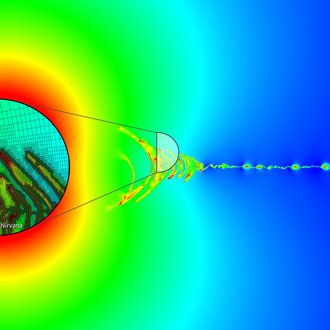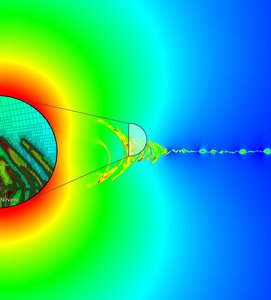14th AIP Thinkshop deals with stellar magnetism

Snapshot from a computer simulation showing how the magnetic field of a massive star interacts with the stellar wind originating from the star. (See text for full caption.)
Credit: AIPThe Leibniz Institute for Astrophysics Potsdam (AIP) organizes the 14th Thinkshop "Stellar Magnetism: Challenges, Connections, and Prospects". From Monday, 12 June 2017, to Friday, 16 June 2017, about 70 researchers will discuss the most recent observational and theoretical work in the field on the Telegrafenberg in Potsdam.
Magnetic fields are present at all stages of stellar evolution – from young stars to so-called magnetars, which are one of the stellar end products. Over the past decade, important progress has been made in measuring the magnetic fields of stars that have a higher or lower mass compared to the Sun. Scientists were able to understand better the origins magnetic fields have and which role related processes play for studying the sun and exoplanets, for example. Within the scientific programme, participants will discuss new findings regarding stellar magnetic field evolution, activity cycles in solar-type stars, and the future perspectives concerning theory and observational facilities.
Image caption: Snapshot from a computer simulation showing how the magnetic field of a massive star interacts with the stellar wind originating from the star. The colours show the gas density distribution. Red indicates high density, blue lower density. The half circle on the left margin indicates the stellar surface. The strong stellar magnetic field traps part of the outflowing gas, which then moves back to the star along the magnetic field lines. Image by: AIP
Further information
The website of the Thinkshop: https://thinkshop.aip.de/14/cms/
Science contact: Dr. Swetlana Hubrig, Leibniz Institute for Astrophysics Potsdam, +49 331-7499 225, hubrig@aip.de
Images
Snapshot from a computer simulation showing how the magnetic field of a massive star interacts with the stellar wind originating from the star. (See text for full caption.)
Big screen size [1000 x 1104, 90 KB]
Original size [2425 x 2679, 410 KB]



